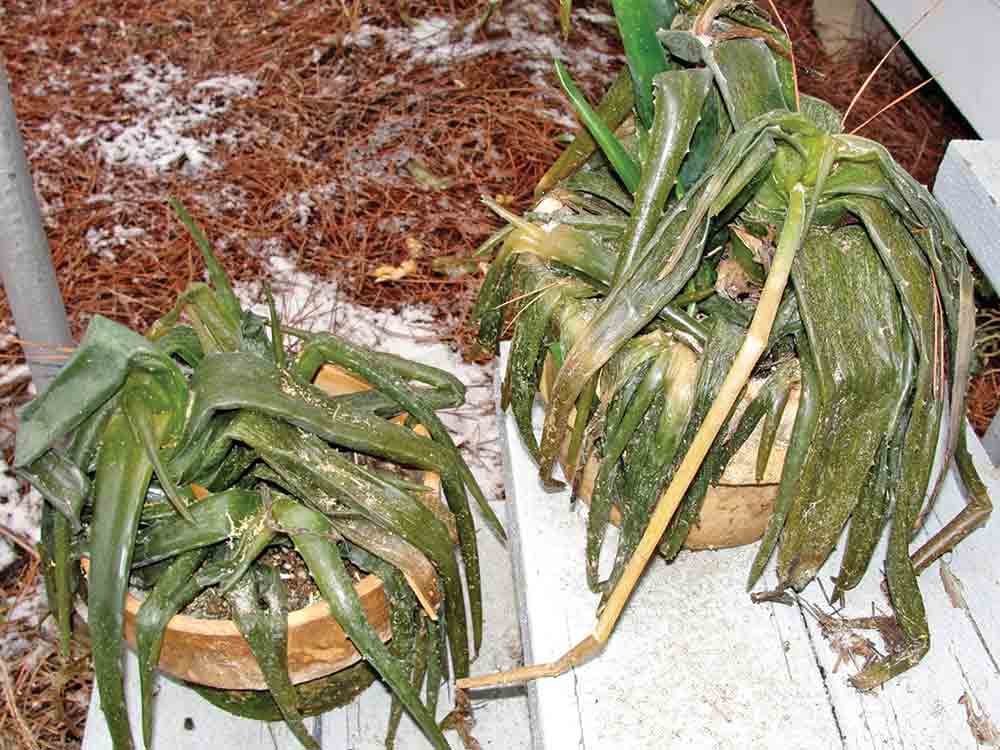 Aloe Vera plant showing freeze damage following January hard freeze.
Aloe Vera plant showing freeze damage following January hard freeze.
By Greg Grant
Texas A&M AgriLifeExtension Smith CountyHorticulture Agent
Unfortunately, the last few years have brought us three rounds of major winter freeze damage and two rounds of summer heat and drought stress. Trying to determine the “cause of death” has become challenging. Our latest winter cold temperatures into the low teens and below followed a relatively mild fall and early winter. Plants do not like quick changes in temperature without time to harden off. Our low temperature in January also fell below our USDA Hardiness Zone 8b averages of 15-20 degrees Fahrenheit.
Severe cold can cause all types of problems for plants. Freezing temperatures can damage plants by rupturing plant cells as ice crystals form and rapid changes in temperatures occur. This time we didn’t have a thick snow cover to insulate the plants though.
The signs of cold damage can be confusing since some damage may not be evident until months later. Leaves and tender shoots subjected to freezing temperatures appear water-soaked and wilted. These tissues will usually turn black within a few days. Tropicals such as esperanza and pride of barbados may have dead foliage and dead stems. We may have lost most of our camellia flowers and buds but hopefully not our famed azaleas. I think we also probably avoided stem damage on most of our evergreen shrubs, unlike the devastating 2021 freeze.
This type of damage occurs as a splitting of the stem or bark, typically near the base of the plant due to sudden changes in temperature. Once they become obvious, split stems and branches should be pruned to unaffected growth. Sometimes cold injury is not readily apparent until the plant starts to flower or actively grow again. At this point, cut out the dead and leave the living.
After a freeze or frost, the leaves of damaged herbaceous (annuals and perennials) plants may immediately appear wilted and water soaked. However, the freeze injury to the twigs, branches or trunks often doesn’t appear on shrubs and trees right away. Wait a few days and then use a knife or thumbnail to scrape the outer bark on young branches. Freeze-damaged areas will be brown beneath the bark. Healthy tissues will be green or white.
Delay pruning until time reveals the areas that are living and dead and until the threat of additional frosts or freezes has passed (around April 1). Leaving dead limbs and foliage at the tops of plants will help protect the lower leaves and branches from nighttime radiation loss. Pruning after a freeze does not improve the outcome. Also, plants that are pruned tend to be invigorated more quickly, which may set them up for further damage in our unpredictable cycling of warm and cold temperatures.
So, do not be in a hurry to prune or remove your damaged plants. Some plants may appear dead but may not be. Corrective pruning should not be started until the full extent of the damage can be determined.
You are a guest
or post as a guest
Be the first to comment.

